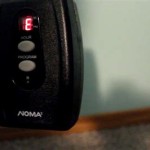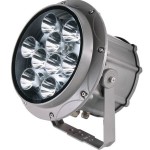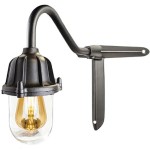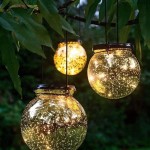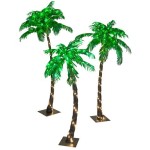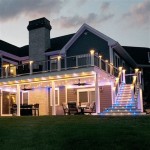How Far Apart Should Outdoor Lighting Be?
Outdoor lighting plays a crucial role in enhancing curb appeal, providing safety, and extending the usability of outdoor spaces. To achieve optimal results, it's essential to consider the spacing of your fixtures. By understanding the factors that influence spacing, you can create a well-lit and aesthetically pleasing environment. This article will explore the key considerations for determining the appropriate distance between outdoor lights.
Purpose and Functionality
The primary function of your outdoor lighting will determine the ideal spacing. For instance, security lighting should be positioned to illuminate potential entry points, such as doorways, windows, and walkways. In this case, closer spacing is generally recommended to minimize dark spots. Conversely, landscape lighting aimed at accentuating plants and features can be spaced farther apart, creating a soft and inviting ambiance.
Consider the specific tasks that will be performed under the lights. For instance, if you plan to read or dine outside, you'll need brighter and closer-spaced fixtures to provide adequate illumination. On the other hand, if the lights are primarily for aesthetics, you might opt for a more spread-out arrangement.
Type of Lighting
The type of lighting fixture influences spacing requirements. Floodlights, with their wide beams, can be spaced further apart than spotlights with narrow beams. Similarly, wall-mounted lanterns might need closer spacing than pole-mounted luminaires.
The light output of each fixture is another key factor. High-lumen fixtures can illuminate a wider area than low-lumen ones, allowing for greater spacing.
Layout of the Space
The size and shape of your outdoor space will significantly impact spacing. Larger areas will generally require wider spacing to cover the entire space, while smaller spaces may benefit from closer spacing. Take into account any existing features such as trees, fences, or walls, as these can impact the light spread and create shadow zones.
Lighting Technique
The type of lighting technique employed will also influence spacing. Layered lighting utilizes multiple levels of illumination to create depth and interest. This technique often involves closer spacing, with low-level lighting for walkways and higher-level lighting for accentuating features. In contrast, single-level lighting, using a single height for all fixtures, may require wider spacing.
Safety and Aesthetics
Safety should be a paramount concern. Avoid placing lights too close to walkways or stairs, as this could create glare or obstruction. Aim for a balance between adequate illumination and minimizing glare. When considering aesthetics, factor in the overall design of your outdoor space and the style of the fixtures. Ensure the spacing complements the existing surroundings and creates a harmonious visual composition.
Specific Spacing Guidelines
While there are no absolute rules, general guidelines can provide a starting point. For security lighting, aim for a spacing of 15-20 feet for floodlights and 10-15 feet for spotlights. For landscape lighting, spacing can vary depending on the type of fixture and the desired effect. Accent lighting often requires closer spacing than pathway lighting.
It's important to remember that these are just guidelines, and actual spacing may need to be adjusted based on the specific circumstances. The installation should be tailored to the unique needs of your outdoor space.

How Far Apart To Space Outdoor Lights Your Diy Backyard

How To Hang Patio Lights

Illuminate Your Path How Far Apart Should Pathway Lights Be

How Much Light Do I Need And Far Apart Should Space My Lights Serenity Outdoor Lighting

How Far Should The Solar Landscape Lights Be Arranged 2024 Bbier

How Bright Should Landscape Lighting Be

Landscape Lighting For Summer Kennedy Electric

Where Should I Position My Outdoor Lights Bondilights

Types Of Outdoor Lighting How To Design Landscape Articles Consolidated Hudson Electric

How Far Apart Should Solar Lights Be Placed Spheral

